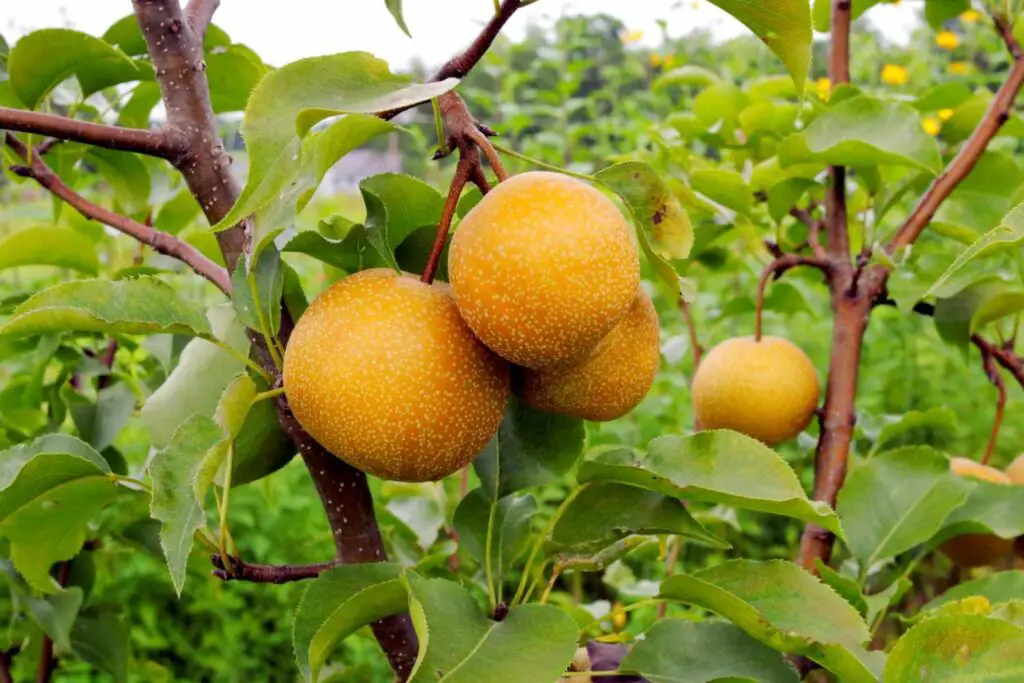
Apples, nature’s delightful and versatile gift that comes in a variety of colors, flavors, and textures. Apples are not only a universally beloved fruit but also a symbol of health, freshness, and culinary possibilities. From the crisp and tart Granny Smith to the sweet and juicy Honeycrisp, apples offer a spectrum of flavors to suit every palate. Whether enjoyed as a refreshing snack, used in pies, crumbles, or salads, or transformed into flavorful sauces and jams, apples are a kitchen staple that can elevate any dish. If you find yourself with an abundance of apples or want to preserve their goodness for future use, freezing them is an excellent way to extend their shelf life and enjoy their crispness and taste throughout the year. In this guide, we’ll delve into the art of freezing apples, sharing valuable tips and techniques to ensure that you can enjoy the fresh flavors and versatility of this marvelous fruit whenever the need arises.
Here are the simple steps to freeze apples:
Step 1: Choose the Right Apples
When it comes to freezing apples, selecting the right variety is key to ensuring successful results. Not all apples freeze equally well, so it’s important to choose varieties that are known for their crispness and firm texture. Here are some popular apple varieties that are generally recommended for freezing:
- Granny Smith: Known for their tartness and firm flesh, Granny Smith apples are an excellent choice for freezing. They hold their shape well during the freezing process and maintain their texture when thawed.
- Honeycrisp: With their sweet and juicy flavor, Honeycrisp apples are another great option for freezing. They have a firm texture that holds up nicely in the freezer, making them ideal for various apple-based recipes.
- Fuji: Fuji apples are known for their exceptional crispness and sweetness. They retain their flavor and texture when frozen, making them a popular choice among those who enjoy sweet, frozen apple treats.
- Gala: Gala apples have a mild and sweet flavor, along with a crisp texture. They freeze well and can be used in a variety of dishes, such as pies, crisps, or even as a healthy frozen snack.
In addition to selecting the right variety, it’s crucial to ensure that the apples are at their peak ripeness before freezing. Freezing will not improve the quality of apples, so it’s best to freeze them when they are at their freshest and most flavorful. Look for apples that are firm, have vibrant colors, and are free from bruises or blemishes.
By choosing the right apples and ensuring their peak ripeness, you are setting the foundation for successful freezing and preserving their natural goodness for future use.
Step 2: Preparation
To prepare the apples for freezing, follow these steps:
- Wash the Apples: Start by washing the apples under cold running water. This helps remove any dirt, debris, or residue from the surface of the apples. Gently rub the skin with your hands to ensure thorough cleaning.
- Peeling (Optional): Peeling the apples is optional and depends on personal preference and the intended use of the frozen apples. The peels can add texture and fiber to recipes, so you may choose to leave them on. However, if you prefer peeled apples or plan to use the frozen slices in dishes where the peels may be undesirable, you can peel the apples.
- Scrubbing (If Peeling Is Not Done): If you decide to keep the peels on the apples, it’s essential to scrub them gently to remove any wax or pesticide residue. Use a soft-bristled brush or a clean cloth to scrub the surface of the apples. This step helps ensure that the frozen apples are clean and free from any unwanted substances.
- Coring: After washing and optionally peeling the apples, core them using an apple corer or a sharp knife. Removing the core helps in even freezing and ensures that you don’t end up with any tough or undesirable parts in the frozen apple slices or chunks.
- Slicing or Chopping: Once the apples are cored, you can proceed to slice or chop them into your preferred shape and size. The choice between slices or chunks depends on your intended use. Slices are suitable for pies, crisps, and snacking, while chunks are often used in recipes like apple sauces or fillings.
By taking these preparation steps, you’ll have clean, peeled (if desired), cored, and sliced/chopped apples ready for freezing, ensuring that they are in optimal condition for preserving their freshness and flavor.
Do you need to blanch apples before freezing?
Blanching apples before freezing is not necessary. Unlike some fruits and vegetables, apples do not require blanching to maintain their quality during freezing. However, proper preparation such as washing, peeling (optional), coring, and pre-treating with lemon juice or ascorbic acid solution to prevent browning is recommended before freezing apple slices or chunks.
Step 3: Pre-Treatment
Apples naturally contain an enzyme called polyphenol oxidase, which causes them to turn brown when exposed to air. To prevent this enzymatic browning and maintain the natural color of the apple slices during freezing, a pre-treatment step is necessary. Here’s how to do it:
- Prepare the Solution: Mix one tablespoon of lemon juice or ascorbic acid powder with one cup of water. Lemon juice and ascorbic acid both contain antioxidants that help inhibit enzymatic browning.
- Submerge the Apple Slices: Place the apple slices in a bowl or container large enough to accommodate them. Pour the lemon juice or ascorbic acid solution over the apple slices, making sure they are fully submerged. This ensures that all exposed surfaces of the apples receive the treatment.
- Soak for a Few Minutes: Allow the apple slices to soak in the solution for a few minutes. The exact duration can vary, but typically 3-5 minutes should suffice. This allows the solution to penetrate the apple slices and provide a protective layer against browning.
- Drain and Pat Dry: After soaking, drain the apple slices from the solution. You can use a colander or a sieve to remove the excess liquid. Then, gently pat the slices dry with a clean kitchen towel or paper towels. Removing excess moisture helps prevent ice crystals from forming during freezing.
Once the pre-treatment is complete, you can proceed with the freezing process using either the dry pack or syrup pack method, as mentioned in the subsequent steps. By taking this simple yet effective step, you ensure that your frozen apple slices retain their fresh appearance and appetizing color.
Step 4: Freezing Methods
When it comes to freezing apples, there are two popular methods you can choose from: the dry pack method and the syrup pack method. Each method offers its own advantages and can be selected based on personal preference and intended use. Let’s explore these methods in detail:
Dry Pack Method:
The dry pack method involves freezing apple slices without any additional liquid. Here’s how to do it:
- Arrange the Apple Slices: Take the prepared apple slices and arrange them in a single layer on a baking sheet lined with parchment paper. Ensure that the slices are not touching each other. This arrangement allows for even freezing and prevents the slices from sticking together.
- Freeze the Slices: Place the baking sheet with the apple slices in the freezer. Allow them to freeze for a few hours or until they are completely solid. The exact freezing time may vary depending on the thickness of the slices and the temperature of your freezer.
- Transfer to Freezer-Safe Containers: Once the apple slices are frozen, carefully remove them from the baking sheet and transfer them into airtight freezer-safe bags or containers. It’s important to remove as much air as possible from the bags or containers to minimize the risk of freezer burn. Label the bags or containers with the date of freezing for easy reference.
- Store in the Freezer: Place the labeled bags or containers of frozen apple slices in the freezer. They can be stored for up to 12 months. Remember to keep the freezer temperature consistently below 0°F (-18°C) for optimal quality.
The dry pack method is preferred by those who want to use the frozen apple slices in recipes where the texture of the apples is crucial, such as pies, crisps, or baked goods. It allows you to easily portion out the desired amount of apple slices for your recipes.
Syrup Pack Method:
The syrup pack method involves freezing apple slices in a sweet syrup solution. This method adds a touch of sweetness to the frozen apples. Here’s how to use the syrup pack method:
- Prepare the Syrup: In a saucepan, dissolve two cups of sugar in four cups of water over low heat, stirring until the sugar is fully dissolved. Allow the syrup to cool completely. You can also add flavors like cinnamon or vanilla extract to enhance the taste, if desired.
- Place the Apple Slices in Containers: Take the prepared apple slices and place them into freezer-safe containers. Leave some headspace at the top of the containers to allow for expansion during freezing.
- Pour the Cooled Syrup: Pour the cooled syrup over the apple slices, ensuring that they are fully submerged. The syrup helps protect the texture and flavor of the apples while adding a sweet touch. Be sure not to overfill the containers to avoid spillage during freezing.
- Seal and Label the Containers: Seal the containers tightly to prevent freezer burn and label them with the date of freezing. This will help you keep track of the freezing time.
- Freeze the Containers: Place the sealed containers of apple slices in the freezer. They can be stored for up to 12 months. Remember to maintain the freezer temperature below 0°F (-18°C) for optimal preservation.
The syrup pack method is a good choice if you plan to use the frozen apple slices in recipes like fruit salads, desserts, or as a standalone sweet treat. The syrup adds sweetness and helps retain the moisture of the apples during freezing.
By choosing the freezing method that suits your needs and preferences, you can ensure that the frozen apple slices retain their quality, taste, and texture for an extended period.
Step 5: Thaw the Frozen Apples
Once you’re ready to use the frozen apples, follow these guidelines for thawing and incorporating them into your recipes:
- Thawing in the Refrigerator: To thaw the frozen apple slices, remove the desired amount from the freezer and place them in a covered container or bowl. Allow them to thaw in the refrigerator for a few hours or overnight. Thawing in the refrigerator ensures a gradual thawing process, preserving the texture and flavor of the apples.
- Cooking or Baking with Frozen Apple Slices: If you prefer to use the frozen apple slices directly in your recipes, you can incorporate them without thawing. Simply add the frozen slices to your pies, cobblers, sauces, or other cooked dishes according to the recipe’s instructions. The apples will naturally thaw and cook while in the oven or on the stovetop.
- Avoid Repeated Thawing and Refreezing: It’s best to avoid repeated thawing and refreezing the apple slices. Each time the apples go through the thawing process, their texture can deteriorate further. To maintain the best quality, it’s recommended to thaw only the amount needed for immediate use and keep the remaining frozen slices in the freezer.
By completing these thawing guidelines and using the frozen apple slices in a timely manner, you can enjoy the convenience of having preserved apples readily available for various culinary creations. Whether you use them in pies, cobblers, sauces, or any other recipe, the frozen apple slices will retain their flavor and contribute to delicious dishes.
Other related questions
How do I know if the apples have gone bad after being frozen?
After being frozen, you can determine if apples have gone bad by observing their appearance, texture, and smell. If the apples have developed an unusual or off-putting color, such as dark brown or black, or if they appear shriveled or excessively mushy, they may have deteriorated. Additionally, a strong, unpleasant odor is a sign of spoilage. When in doubt, it’s best to discard the apples to ensure food safety.
What are some creative ways to use frozen apples in recipes?
Frozen apples can be utilized in a variety of creative recipes. They can be used as an ingredient for pies, crisps, or cobblers, providing a burst of flavor and moisture when baked. Additionally, frozen apple slices can be blended into smoothies or used as a topping for pancakes or oatmeal. They can also be cooked down into applesauce or used in savory dishes like stews or roasted meat glazes, adding a touch of sweetness and depth of flavor.
Can you freeze apples without them getting mushy?
Freezing apples can lead to a softer texture upon thawing, but there are methods to minimize mushiness. Choose firm apple varieties and ensure they are at their peak ripeness before freezing. Pre-treat the apple slices with lemon juice or ascorbic acid solution to prevent enzymatic browning, which can help maintain their texture. Additionally, using the dry pack method, where the slices are frozen without any additional liquid, can help preserve the texture better compared to the syrup pack method.
Can I freeze apples for making smoothies?
Yes, you can freeze apples for making smoothies. Freezing apples preserves their natural flavor and texture, making them a convenient option for smoothie preparation. Thawed frozen apple slices blend well with other ingredients, adding a refreshing and fruity taste to your smoothies.
Can frozen apples be used in raw preparations like salads?
Frozen apples are not typically recommended for raw preparations like salads. Freezing alters the texture of apples, causing them to become softer and potentially mushy when thawed. This change in texture may not be ideal for salads, where crispness is often desired.
Can frozen apples be used in canning or preserving?
While frozen apples can be used in some canning or preserving recipes, their texture may change during the freezing and thawing process. The cell structure of the apples can break down, resulting in softer or mushier fruit, which may not be ideal for certain canning applications where crispness is desired. It is important to consider the specific recipe requirements and desired outcome when deciding whether to use frozen apples for canning or preserving.








